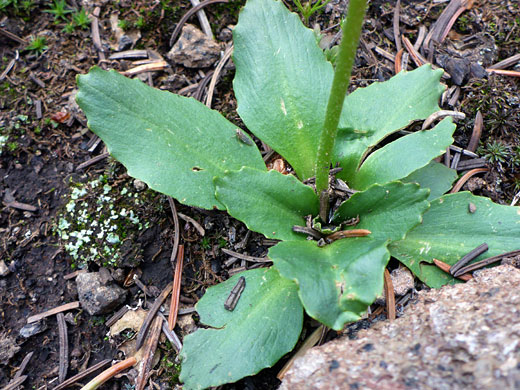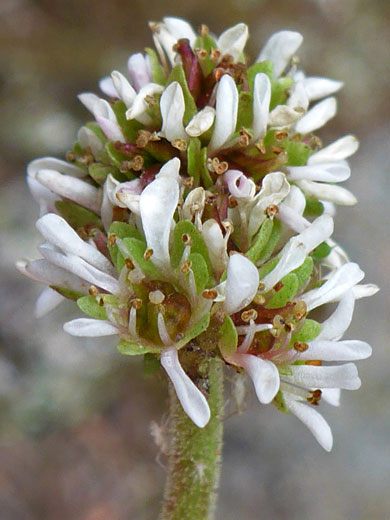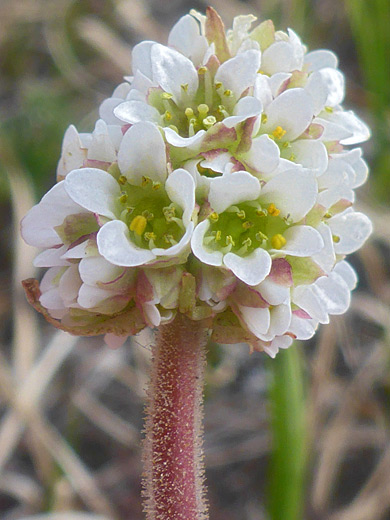Micranthes Rhomboidea, Diamond-Leaf Pseudosaxifrage
Plants > Wildflowers > Saxifragaceae > Micranthes Rhomboidea
Common names:
Diamond-leaf pseudosaxifrage, snowball saxifrage
Family:
Scientific name:
Micranthes rhomboidea
Main flower color:
Range:
The Rocky Mountain states; west to Nevada
Height:
Up to 10 inches
Habitat:
Moist mountain meadows and slopes; 5,000 to 15,000 feet
Leaves:
Thick, ovate to triangular, up to 1.2 inches long, lined by small teeth
Season:
May to September
Micranthes rhomboidea is found over a wide range of elevations but is most common in the high mountains, in the tundra zone above the treeline. Leaves grow only at the base; they are thick and fleshy, with coarsely toothed edges. The upper surfaces of the leaves are smooth and hairless, while the lower surfaces have a sparse covering of brownish, cobweb-like hairs. Leaves are attached by flattened stalks about one inch long. Leaves taper gradually at the base, giving them an approximate diamond-shape.
The inflorescence is a compact, slightly elongated cluster containing between 10 and 40 flowers, at the upper end of a stout, reddish stem, densely covered with yellowish, glandular, head-shaped hairs. Flowers have five ascending, green sepals below and between five white, clawed, oblong petals. Petals are a little longer than the sepals. The five stamens have green filaments and yellow anthers.
The inflorescence is a compact, slightly elongated cluster containing between 10 and 40 flowers, at the upper end of a stout, reddish stem, densely covered with yellowish, glandular, head-shaped hairs. Flowers have five ascending, green sepals below and between five white, clawed, oblong petals. Petals are a little longer than the sepals. The five stamens have green filaments and yellow anthers.
All Contents © Copyright The American Southwest | Comments and Questions | Contribute | Site Map














